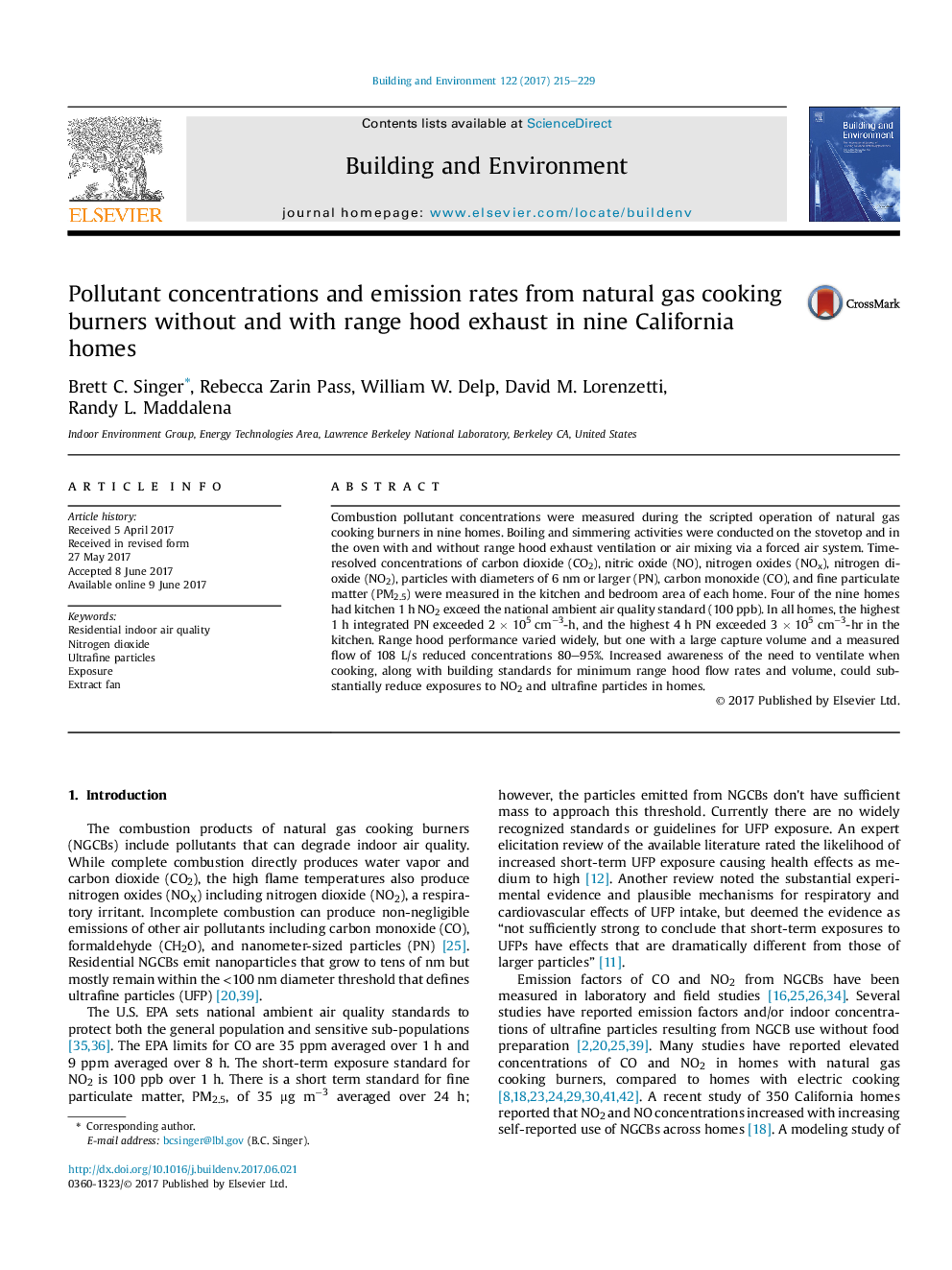| Article ID | Journal | Published Year | Pages | File Type |
|---|---|---|---|---|
| 4911461 | Building and Environment | 2017 | 15 Pages |
Abstract
Combustion pollutant concentrations were measured during the scripted operation of natural gas cooking burners in nine homes. Boiling and simmering activities were conducted on the stovetop and in the oven with and without range hood exhaust ventilation or air mixing via a forced air system. Time-resolved concentrations of carbon dioxide (CO2), nitric oxide (NO), nitrogen oxides (NOx), nitrogen dioxide (NO2), particles with diameters of 6Â nm or larger (PN), carbon monoxide (CO), and fine particulate matter (PM2.5) were measured in the kitchen and bedroom area of each home. Four of the nine homes had kitchen 1Â h NO2 exceed the national ambient air quality standard (100Â ppb). In all homes, the highest 1Â h integrated PN exceeded 2Â ÃÂ 105Â cmâ3-h, and the highest 4Â h PN exceeded 3Â ÃÂ 105Â cmâ3-hr in the kitchen. Range hood performance varied widely, but one with a large capture volume and a measured flow of 108Â L/s reduced concentrations 80-95%. Increased awareness of the need to ventilate when cooking, along with building standards for minimum range hood flow rates and volume, could substantially reduce exposures to NO2 and ultrafine particles in homes.
Related Topics
Physical Sciences and Engineering
Energy
Renewable Energy, Sustainability and the Environment
Authors
Brett C. Singer, Rebecca Zarin Pass, William W. Delp, David M. Lorenzetti, Randy L. Maddalena,
